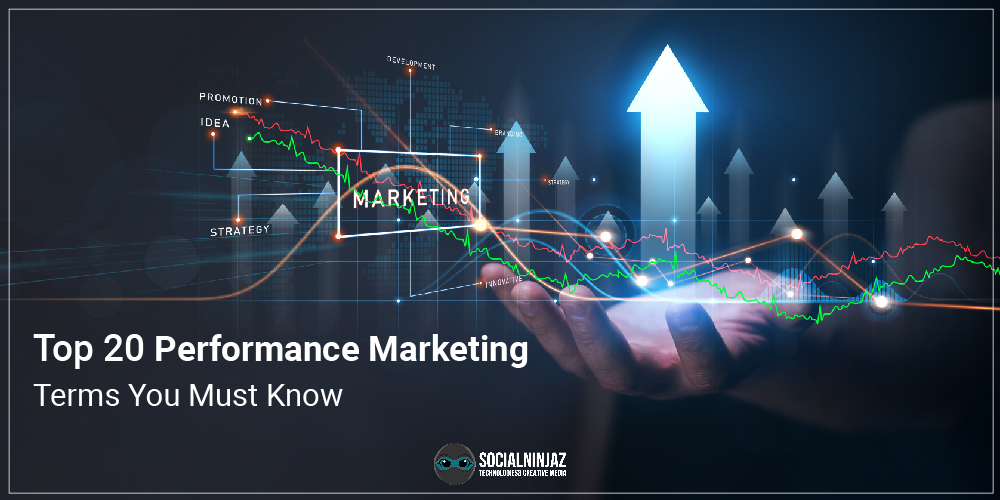Performance marketing is a form of digital advertising that focuses on specific goals and measurable outcomes. It is a data-driven approach to marketing that seeks to optimize campaigns for the best possible return on investment (ROI). Several terms are employed to describe various aspects of performance marketing. Attaching a list of the top 20 performance marketing terms you need to know about.
A to F:
Abandon Rate – refers to the percentage of visitors to a website who leave before completing the desired action.
A/B testing compares two versions of a marketing campaign or website to determine which performs better. It involves splitting the target audience into two groups and exposing them to different versions of the campaign or website. The outcomes are, then compared to determine which version performs best.
Cost Per Action is a pricing model in which advertisers pay a fixed amount for each specific action taken by a user on their website.
Conversion Rate is the percentage of people who complete the desired action on a website, such as making a purchase or signing up for a newsletter. It is determined by dividing the number of conversions by the total number of visitors to the site.
Cost Per Click (CPC)
It is the amount advertisers pay each time a user clicks on one of their ads. It is used in pay-per-click advertising campaigns, where the goal is to drive traffic to the advertiser’s website.
Cost Per Engagement (CPE) measures the cost of getting a user to engage with an advertisement by clicking on it or watching a video.
Click Pixel is a small piece of code placed on a landing page and tracks click on a specific link or button. With this, marketers can track the effectiveness of their campaigns and optimize them for better results.
Cost Per Lead (CPL) refers to the amount of money spent on a marketing campaign for each lead generated, such as a potential customer filling out a form or signing up for a newsletter.
Click-through Rate (CTR) measures the percentage of clicks that a particular ad receives compared to the number of times it is displayed.
Cost Per Mile (CPM) a pricing model that refers to the cost of delivering an advertisement to 1,000 viewers. It is commonly used in display and video advertising.
G to R:
Geo-Targeting is a technique for accurately determining the location of your visitors and reflecting targeted content.
Hard Bounces refers to emails that aren’t delivered due to invalid or inactive email addresses.
Key Performance Indicators (KPIs): These are metrics used to measure the success of a marketing campaign or strategy. Examples of KPIs include cost per acquisition (CPA), return on ad spend (ROAS), and conversion rate.
Real-Time Bidding – It is a type of online advertising in which advertisers bid on the right to show an ad to a specific user.
Re-engagement is a marketing strategy to bring back inactive or lapsed customers to a product or service. Often used in email marketing campaigns or through retargeting ads.
RFM Analysis stands for Recency, Frequency, and Monetary value. It involves looking at how recently a customer made a purchase, how often they purchase, and how much they spend.
S to Z:
Simple ROI – It measures the profit or loss made on an investment, calculated by dividing the gain/loss by the cost of the investment.
View-through – number of people who saw an ad but did not click on it. It determines the effectiveness of the ad campaign and can be used to optimize future campaigns.
A tracking pixel is a small transparent image placed on a website or email to track website traffic or engagement. It is used to collect data on the effectiveness of marketing campaigns and to improve website performance.
ROAS – Return on ad spend: This measures the profitability of a marketing campaign. It can be determined by dividing the revenue generated by the campaign by the cost of the campaign.
Conclusion:
Performance marketing is a valuable strategy for businesses looking to drive results and maximize their return on investment. By focusing on measurable actions and utilizing data-driven approaches, companies can effectively target their audience and achieve their desired outcomes. With the ability to track and analyze data in real-time, businesses can continuously optimize their performance marketing. Overall, performance marketing is a crucial component of any successful marketing strategy, and businesses should construct overall marketing strategy around it to drive growth and success.
